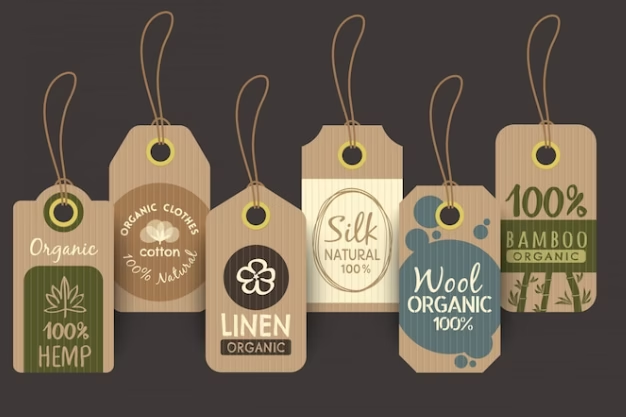
10 Eco-Friendly Fashion Brands Leading the Charge Against Climate Change
The fashion industry accounts for 10% of global carbon emissions and 20% of wastewater production—a staggering toll for the sake of trends. But a new wave of brands is rewriting the narrative, proving that style and sustainability can coexist. From carbon-neutral supply chains to regenerative farming practices, these pioneers are redefining what it means to dress consciously. In this article, we spotlight 10 innovative brands committed to reducing fashion’s environmental footprint while offering chic, ethical alternatives to fast fashion.
The Urgency of Sustainable Fashion
Before diving into the brands, it’s crucial to understand why eco-friendly fashion matters:
- Textile Waste: 85% of clothing ends up in landfills, where synthetic fibers like polyester take 200+ years to decompose.
- Water Consumption: Producing one cotton T-shirt requires 2,700 liters of water—enough for one person to drink for 2.5 years.
- Labor Exploitation: Fast fashion relies on underpaid workers in unsafe conditions; 93% of brands aren’t paying garment workers a living wage.
Sustainable brands address these issues through circular designs, organic materials, and fair labor practices. Let’s explore the leaders of this movement.
1. Patagonia: The Gold Standard of Ethical Outerwear
Commitments: Carbon neutral by 2025, 100% renewable energy in operations, 1% of sales donated to environmental causes.
Standout Initiatives:
- Worn Wear Program: Repairs and resells used Patagonia gear, diverting 72,000+ garments from landfills annually.
- Regenerative Organic Certified™ Cotton: Partners with Indian farmers to grow cotton that enriches soil health.
Why We Love It: Patagonia’s anti-consumerist “Don’t Buy This Jacket” campaign challenges shoppers to prioritize longevity over trends.
2. Stella McCartney: Luxury Meets Sustainability
Commitments: 100% vegetarian (no leather, fur, or feathers), 45% recycled materials in 2023 collections.
Innovations:
- Mylo™ Mushroom Leather: Collaborates with Bolt Threads to create vegan leather from mycelium.
- Clevercare Labels: Teaches customers to wash clothes efficiently, reducing microplastic pollution.
Impact: Saved 1 million animals since 2001 by eschewing animal products.
3. Reformation: Carbon-Neutral Chic
Commitments: Carbon neutral since 2015, 75% recycled or deadstock materials, water usage tracked via “RefScale.”
Highlights:
- Factory Sustainability: LA-based facilities run on renewable energy and recycle 75% of water.
- Clothes the Loop: Accepts old garments (any brand) for recycling, offering $15 store credit.
Vibe: Effortlessly cool dresses and jumpsuits favored by celebs like Taylor Swift and Dua Lipa.
4. Eileen Fisher: Timeless Minimalism with a Conscience
Commitments: 95% organic or recycled materials by 2025, 100% circular packaging.
Programs:
- Renew: Resells gently worn Eileen Fisher pieces, with proceeds funding women’s initiatives.
- Vision2020: Eliminated virgin polyester and reduced water use by 30% in dyeing processes.
Ethos: “We make clothes to last, then take them back to remake again.”
5. Tentree: Plant a Tree with Every Purchase
Commitments: 10 trees planted per item sold (80+ million planted to date), 95% sustainable materials.
Materials:
- Coconut Husk Fabric: Uses coconut waste to create breathable, odor-resistant activewear.
- Kelp-Dyed Apparel: Partners with Living Ink to replace synthetic dyes with algae-based pigments.
Perk: Each garment tag includes a code to track your trees’ planting location.
6. Pangaia: Science-Backed Sustainable Innovation
Commitments: 100% carbon-neutral shipping, 95% plant-based materials.
Breakthroughs:
- FLWRDWN™: Insulation made from wildflowers, replacing animal down.
- Seaweed Fiber T-Shirts: Marine algae-infused fabric that biodegrades in 12 weeks.
Cool Factor: Worn by Emma Watson and featured in Vogue’s “Green Carpet” roundups.
7. Amour Vert: Zero-Waste Wardrobe Staples
Commitments: 97% USA-made, 0% textile waste via made-to-order models.
Practices:
- Plant a Tree® Program: Partners with American Forests to plant a tree for every T-shirt sold.
- Eco-Silk: Uses closed-loop water systems to produce silk without toxic runoff.
Best For: Office-ready blazers and versatile basics.
8. Mara Hoffman: Bold Prints, Responsible Practices
Commitments: 85% sustainable materials, 100% transparent supply chain.
Materials:
- ECONYL®: Swimwear made from recycled fishing nets.
- Cactus Leather: Partners with Desserto to create cruelty-free accessories.
Signature: Vibrant, travel-inspired collections that defy “granola” stereotypes.
9. Kotn: Ethically Made Essentials
Commitments: Direct trade with Egyptian cotton farmers, B Corp certified.
Impact:
- Built 12 schools in rural Egypt through cotton sales.
- Uses 100% organic cotton with 62% less water than conventional farming.
Must-Have: Buttery-soft crewnecks and bedding sets.
10. Outerknown: Surf Culture Goes Sustainable
Commitments: 90% eco-friendly materials, Fair Labor Association member.
Innovations:
- S.E.A. Jeans: Denim dyed with natural indigo and recycled water.
- Nullarbor™: Merino wool sourced from carbon-positive Australian farms.
Co-Founder: Pro surfer Kelly Slater, blending coastal cool with activism.
How to Spot Greenwashing: A Buyer’s Guide
Not all “eco-friendly” claims hold water. Here’s how to shop smarter:
- Look for Certifications: GOTS (organic textiles), Fair Trade, B Corp, and Bluesign®.
- Check Material Breakdowns: Brands should specify percentages of recycled/organic content.
- Avoid Vague Terms: “Eco-conscious” means nothing without proof.
- Research Supply Chains: Transparent brands map their factories and farms online.
The Future of Fashion: Circularity and Climate Action
The next decade will hinge on these advancements:
- Biofabrication: Lab-grown leather (e.g., Modern Meadow’s Zoa™) and spider silk from yeast.
- Digital Fashion: NFTs for virtual clothing reduce physical production (e.g., DressX).
- Rental and Resale: Platforms like Rent the Runway and ThredUP projected to grow 15% annually.
Conclusion: Your Wardrobe Can Change the World
Supporting eco-friendly brands isn’t just about looking good—it’s a vote for fair labor, biodiversity, and a livable planet. While sustainable fashion often carries higher price tags, cost-per-wear analysis reveals long-term savings.

As Livia Firth, founder of Eco-Age, says: “Every time you spend money, you’re casting a vote for the kind of world you want.” By choosing brands that prioritize people and the planet, we can transform fashion from a climate villain into a force for regeneration.







